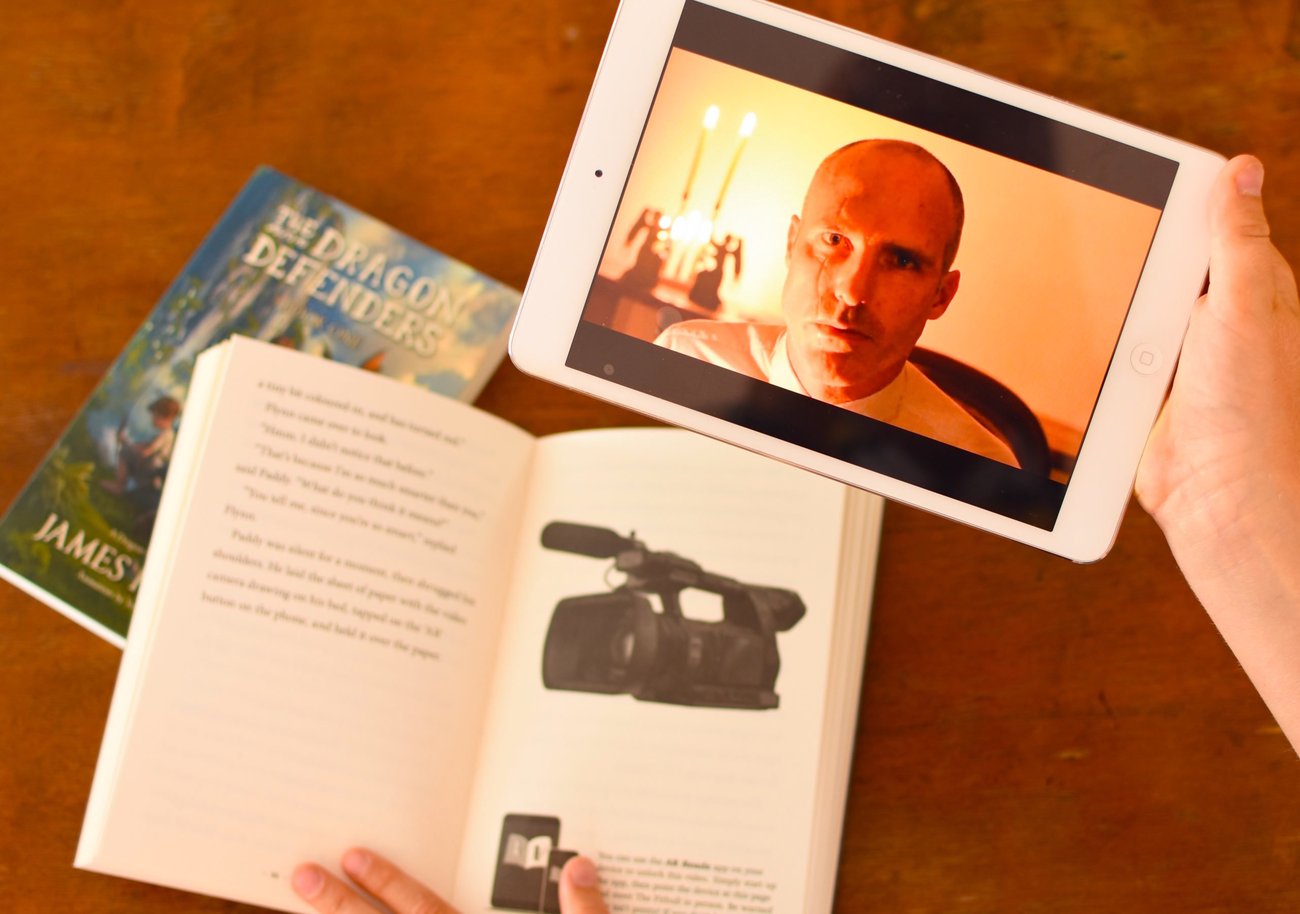Elevator pitch: The Dragon Defenders, an augmented reality children’s book

Augmented reality (AR) is a computer-generated image that’s imprinted on the real world. It’s frequently touted as the future of tech, but it’s also impacting on age-old technologies.
Paperback books are being given a high-tech twist, with AR apps on a tablet or phone providing a way to make the story jump off the page through 3D images.
Combining books with AR is on the rise, but New Zealand children’s author James Russell reckons he’s one of the first in the world to incorporate the technology into children’s novels.
“It’s definitely not commonplace. It’s getting more common in picture books, but in [children’s] novels, mine’s only one of two, perhaps three, in the world so it’s very rare,” Russell says.
Russell first dabbled in AR content by creating an app called AR Reads for his previously released picture book trilogy.
His latest creation, a children’s novel for a slightly older audience called Dragon Defenders, contains five moments of AR technology – a 3D model, two 2D animations, a coded page and a video.

Russell initially had the idea to combine children’s novels with AR after he saw a friend using the technology to play a promotional video on his business card.
“As soon as I saw that, I recognised the opportunity for a children’s book. He put me in touch with some animators and I just went for it.”
Initially, he didn’t have a clue what he was doing or what kind of pricing was reasonable for creating animations.
“I’d get a quote from someone and I didn’t know if it was ridiculously high or not, so I had to try get hold of people around the world that were willing to help.”
As well as this, building an app from scratch was a risky, expensive exercise, he says, but it has since paid off, with the picture books being picked up by publishers around the world.
He says the AR element in the books provided a unique point of difference, helping his book stand out in a crowded category globally.
While the latest book, Dragon Defenders, has only been out a couple of weeks, he says it’s already been picked up by a Czech Republic publisher.
Paperback books are highly prized and protected by avid readers. The eReader revolution came and went, with many expressing outrage at the thought that new tech could replace the reading experience.
Those same people might balk at the thought of AR technology being weaved into a story – and particularly one aimed at children – but Russell says it adds to, not detracts, from a book.
“The purists would say it doesn’t enhance it at all, it takes away from the reading experience. I don’t agree,” he says.
“It broadens and deepens the world in which the reader finds themselves in, and it could make it a bit more exciting. It’s been particularly effective for children that are reluctant readers, like if they don’t gravitate towards picking up a book. With this, they can’t wait to get through to the next part of AR content. I can’t see it being anything other than a plus.”
_large.jpg)
He says he was careful to ensure each AR addition didn’t replace the role of the reader’s imagination, as that’s the most powerful part of reading a novel.
For example, one of the AR features in the Dragon Defenders novel is a vintage map that animates, with a dotted line tracing the way that some of the characters go.
“I’m not trying to make it look like the real world, it’s still leaving a lot to the imagination. I think that’s key, rather than spelling it all out,” he says.
Russell says feedback about the book has been great, so he’s inspired to create more sequels to follow. Dragon Defenders will be the first augmented reality novel of five, or possibly more.
Meanwhile, he says the art of storytelling will continue to be reinvented – or at least, augmented – as AR books grow in popularity within New Zealand and further abroad.




